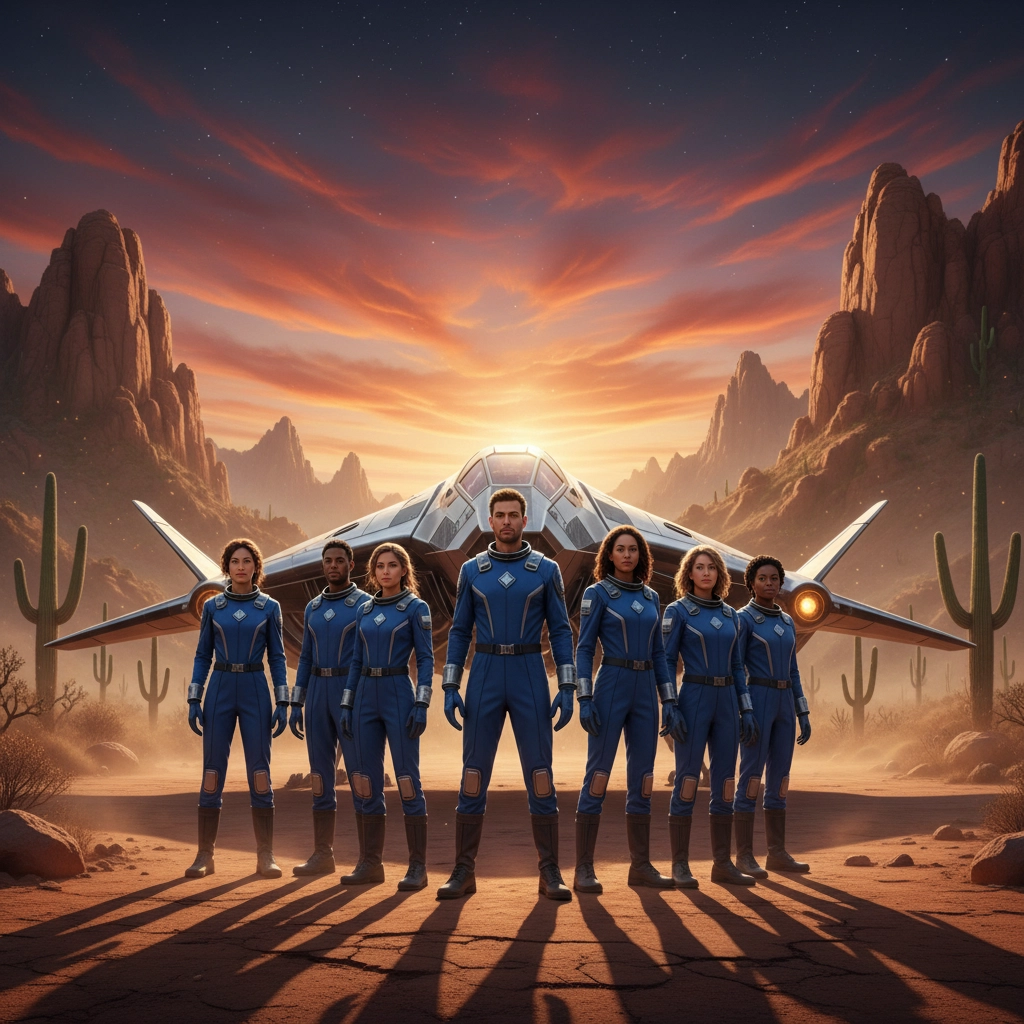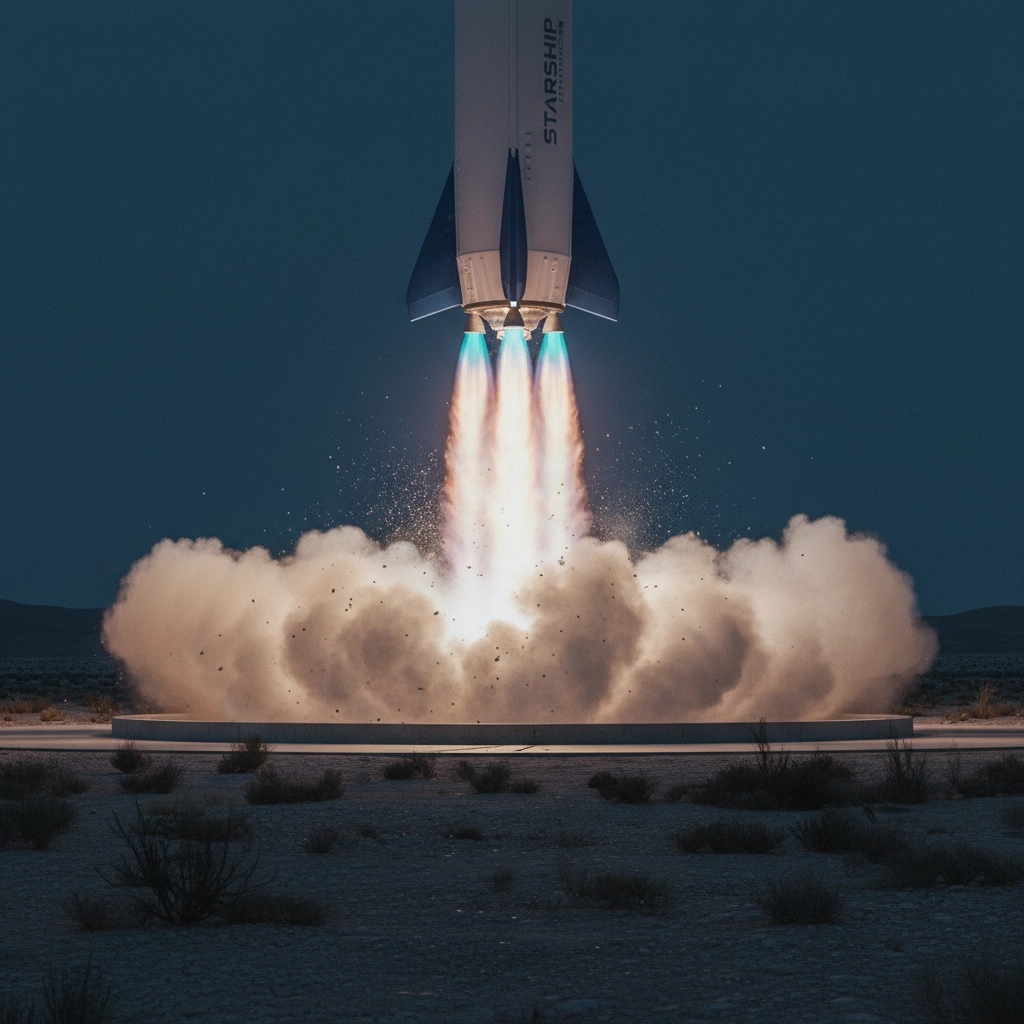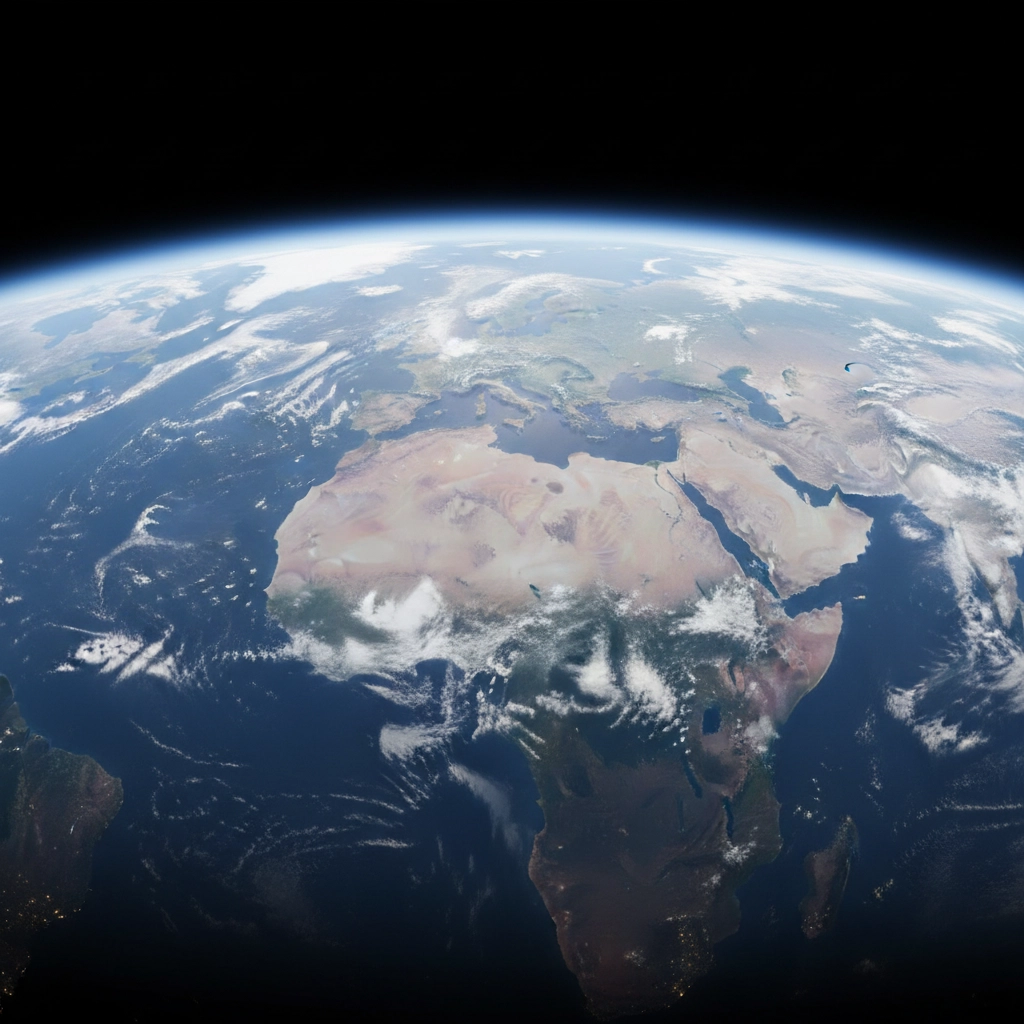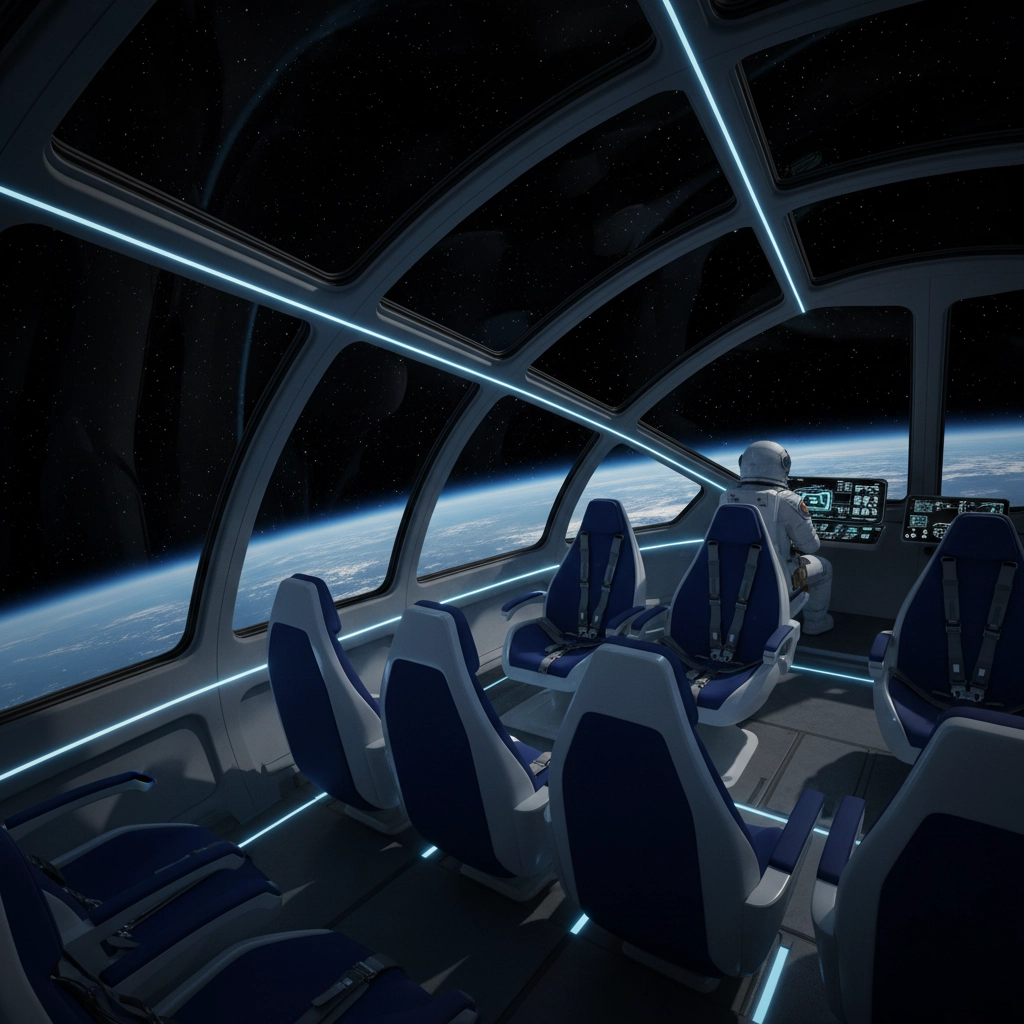Have you ever wondered what it feels like to float weightlessly above Earth, gazing down at our blue marble from the edge of space? Well, six lucky adventurers just found out firsthand when Blue Origin successfully completed its 15th commercial space tourism mission on October 8, 2025. The NS-36 flight wasn't just another tick in the space tourism box: it represents a pivotal moment in how we're transforming space travel from an exclusive government endeavor into something approaching everyday reality.
The mission, which launched from Blue Origin's West Texas facility, carried a diverse crew of entrepreneurs, engineers, and dreamers on a 10-minute, 21-second journey that reached 66 miles above Earth. But here's what makes this flight truly significant: it's proof that commercial space travel is no longer a futuristic fantasy: it's happening right now, and it's getting better with every launch.
Meet the "Space Nomads" Who Made History

The six passengers aboard NS-36 dubbed themselves the "Space Nomads," and what a crew they were! The group included franchise executive Jeff Elgin, media entrepreneur Danna Karagussova, electrical engineer Clint Kelly III, software entrepreneur Aaron Newman, Ukrainian businessman Vitalii Ostrovsky, and one mysterious passenger who kept their identity secret until after landing.
What struck me most about this crew wasn't their wealth or status: it was their diversity. These weren't all billionaire tech moguls or celebrities seeking publicity. They were professionals from various fields, united by one common dream: to experience space firsthand. Karagussova's exclamation of "Oh my God, oh my God!" upon reaching weightlessness captured the pure, unfiltered wonder that space travel still inspires, even as it becomes more routine.
Interestingly, Kelly was actually a repeat customer, having previously flown on New Shepard's NS-22 mission back in August 2022. The fact that people are returning for second trips tells us something important: this isn't just about bragging rights: it's about an experience so transformative that people want to do it again.
The Technical Marvel Behind the Magic
Let's talk about what actually happened up there, because the technical execution was flawless. New Shepard, Blue Origin's reusable rocket system, performed exactly as designed. The booster launched the crew capsule to the edge of space, separated as planned, and then executed a picture-perfect vertical landing back on the launch pad: all while the capsule continued its ballistic arc above the atmosphere.
For those crucial few minutes at apogee, the passengers experienced true weightlessness and witnessed views that only a few hundred humans in history have ever seen. Then, as Earth's gravity reclaimed them, the capsule deployed its parachutes and touched down gently in the Texas desert, completing another textbook flight.
This level of reliability is crucial for the future of Blue Origin space tourism. Every successful mission builds confidence not just among future passengers, but within the broader space industry. We're witnessing the transformation of space travel from experimental adventure to routine operation.
Why Reusability Changes Everything

Here's where things get really exciting for the future of space travel: reusability. Unlike the early space age, where every rocket was essentially a very expensive firework used once and then lost forever, New Shepard returns to fly another day. This isn't just good for the environment: it's revolutionary for the economics of space access.
Think about it this way: imagine if every time you wanted to fly across the country, airlines had to build an entirely new plane, use it once, and then throw it away. Air travel would cost millions of dollars per ticket instead of hundreds. The same principle applies to space travel. As Blue Origin refines its reusable rocket technology and completes more flights, the cost per seat should theoretically decrease over time.
This mission marked Blue Origin's 36th New Shepard flight overall, with 21 of those being uncrewed research missions. Each flight provides valuable data that improves safety, reliability, and efficiency for future missions. The more they fly, the better and more affordable it becomes.
The Bigger Picture: Space Tourism Goes Mainstream
What's particularly fascinating about the NS-36 mission is how normal it felt. There wasn't the massive media circus that surrounded early space tourism flights. Social media buzzed for a day, but then we all moved on with our lives. In a strange way, this normalcy is exactly what the industry needs.
When space travel becomes routine rather than extraordinary, that's when we know we've truly entered a new era. Blue Origin is competing with companies like Virgin Galactic and SpaceX in what's becoming a legitimate commercial market. Different companies are targeting different segments: suborbital versus orbital experiences: but they're all contributing to the same goal: making space accessible to more people.
The diversity of the NS-36 crew also signals something important about the market's evolution. Early space tourists were primarily ultra-wealthy individuals making headlines with their flights. Today's passengers represent a broader cross-section of successful professionals who've likely saved, planned, and dreamed of this experience for years.
What This Means for Aspiring Space Travelers

If you've ever looked up at the night sky and wondered what it would feel like to be up there, missions like NS-36 are bringing that possibility closer to reality. While space tourism isn't exactly budget-friendly yet: Virgin Galactic charges around $600,000 per seat: the trajectory is clear: prices are heading downward as technology improves and operations scale up.
The beauty of Blue Origin's approach is its focus on the suborbital experience. You don't need to commit to days or weeks in space like orbital missions require. The entire experience, from takeoff to landing, happens in about 10 minutes. That's just long enough to experience weightlessness, see the curvature of Earth, and have your worldview fundamentally shifted, but short enough to fit into a long weekend adventure.
For those curious about the broader landscape of space travel costs and options, the market is rapidly evolving with various price points and experiences becoming available.
The Ripple Effects Beyond Tourism
Here's what really excites me about missions like NS-36: the technology and operational experience gained from space tourism directly benefits other space endeavors. Every flight tests life support systems, navigation equipment, and safety protocols that can be applied to scientific research missions, satellite deployments, and eventually, missions to the Moon and Mars.
Blue Origin isn't just building a space tourism business: they're developing the infrastructure for humanity's expansion into space. The same reusable rockets that carry tourists today could carry researchers, equipment, and supplies tomorrow. The operational procedures being refined through tourism flights are laying the groundwork for more complex missions.
Looking Forward: What's Next?

The success of NS-36 and Blue Origin's growing flight cadence suggest we're entering a new phase of space tourism maturity. As operations become more routine and costs continue to decrease, we're likely to see several important developments:
First, expect to see more diverse passenger manifests. As space travel becomes more accessible, we'll see people from different economic backgrounds, cultures, and professions making the journey. The democratization of space access is just beginning.
Second, competition will drive innovation and cost reduction. As Blue Origin, Virgin Galactic, SpaceX, and newer companies compete for customers, they'll need to differentiate through better experiences, lower prices, or both.
Finally, regulatory frameworks will continue evolving to support this growing industry. The Federal Aviation Administration and other space agencies worldwide are adapting their oversight approaches to balance safety with commercial innovation.
The Adventure Awaits
The NS-36 mission represents more than just another successful flight: it's a milestone in humanity's journey toward becoming a truly spacefaring species. Every passenger who returns with stories of seeing Earth from space, experiencing weightlessness, and touching the edge of the cosmos brings us closer to a future where such experiences are available to many rather than few.
For those of us still dreaming of our own space adventure, missions like this prove that dream is becoming more achievable every day. The technology is proven, the operations are maturing, and the industry is growing. Whether through Blue Origin's suborbital flights, other companies' orbital experiences, or future space hotels and lunar excursions, space tourism is transforming from science fiction into accessible reality.
The question isn't whether space tourism will continue to grow: it's how quickly it will become as routine as international air travel. Based on what we're seeing with missions like NS-36, that future might be closer than we think.
Want to stay updated on the latest developments in space tourism and commercial space travel? The industry is moving fast, and new opportunities for space adventures are emerging regularly. Your own journey to space might be just around the corner.
Meta Title: Blue Origin Space Tourism: NS-36 Mission Marks Major Commercial Space Travel Milestone
Meta Description: Blue Origin's 15th space tourism mission proves commercial space travel is maturing fast. Discover what the NS-36 flight means for future space adventures and accessibility.
Focus Keyphrase: Blue Origin space tourism
Categories: Space Tourism, Commercial Space Travel, Blue Origin
Tags: Blue Origin, NS-36 mission, suborbital flight, New Shepard, space tourism 2025, commercial spaceflight
